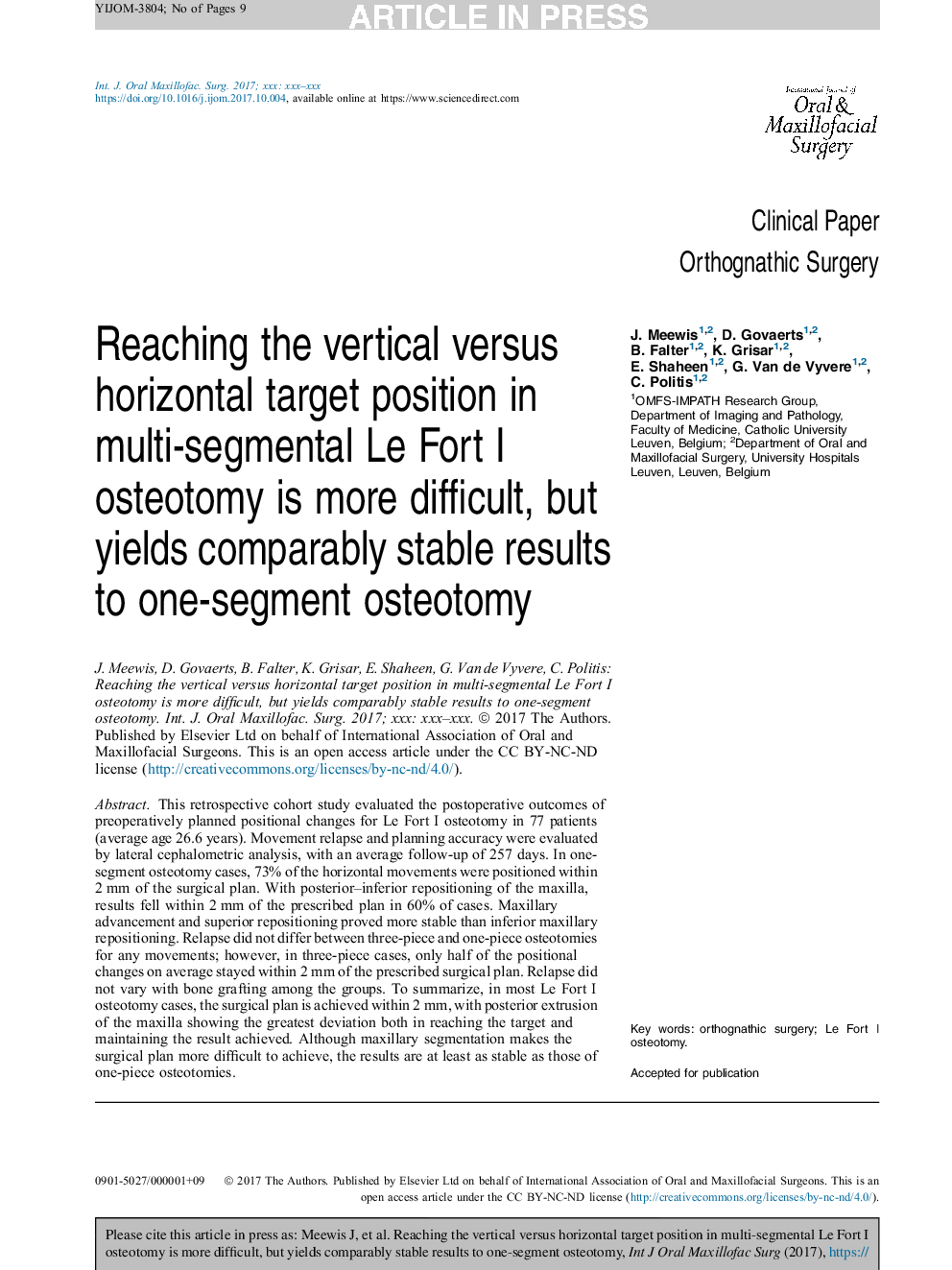| Article ID | Journal | Published Year | Pages | File Type |
|---|---|---|---|---|
| 8697841 | International Journal of Oral and Maxillofacial Surgery | 2018 | 9 Pages |
Abstract
This retrospective cohort study evaluated the postoperative outcomes of preoperatively planned positional changes for Le Fort I osteotomy in 77 patients (average age 26.6 years). Movement relapse and planning accuracy were evaluated by lateral cephalometric analysis, with an average follow-up of 257 days. In one-segment osteotomy cases, 73% of the horizontal movements were positioned within 2Â mm of the surgical plan. With posterior-inferior repositioning of the maxilla, results fell within 2Â mm of the prescribed plan in 60% of cases. Maxillary advancement and superior repositioning proved more stable than inferior maxillary repositioning. Relapse did not differ between three-piece and one-piece osteotomies for any movements; however, in three-piece cases, only half of the positional changes on average stayed within 2Â mm of the prescribed surgical plan. Relapse did not vary with bone grafting among the groups. To summarize, in most Le Fort I osteotomy cases, the surgical plan is achieved within 2Â mm, with posterior extrusion of the maxilla showing the greatest deviation both in reaching the target and maintaining the result achieved. Although maxillary segmentation makes the surgical plan more difficult to achieve, the results are at least as stable as those of one-piece osteotomies.
Related Topics
Health Sciences
Medicine and Dentistry
Dentistry, Oral Surgery and Medicine
Authors
J. Meewis, D. Govaerts, B. Falter, K. Grisar, E. Shaheen, G. Van de Vyvere, C. Politis,
